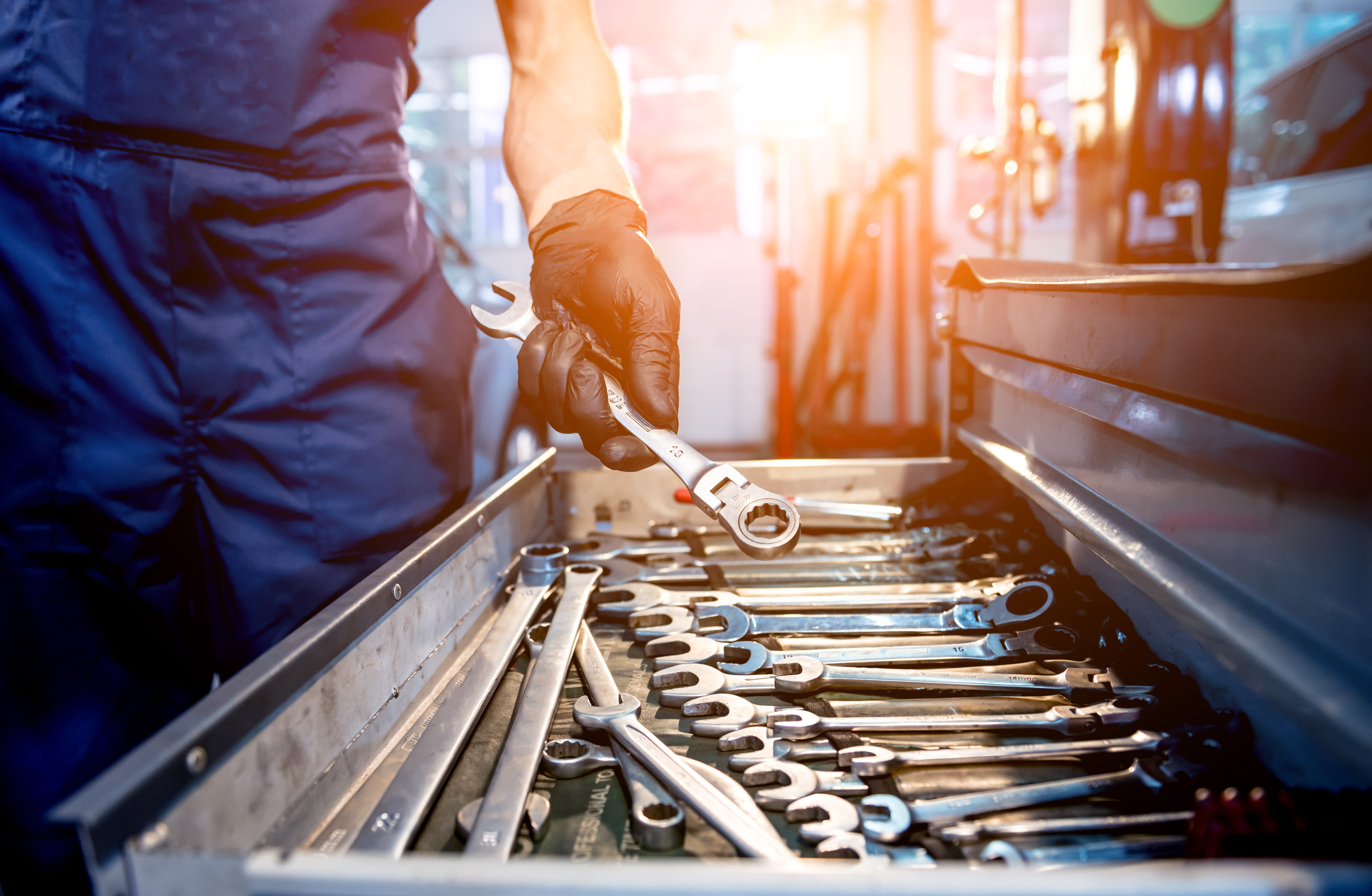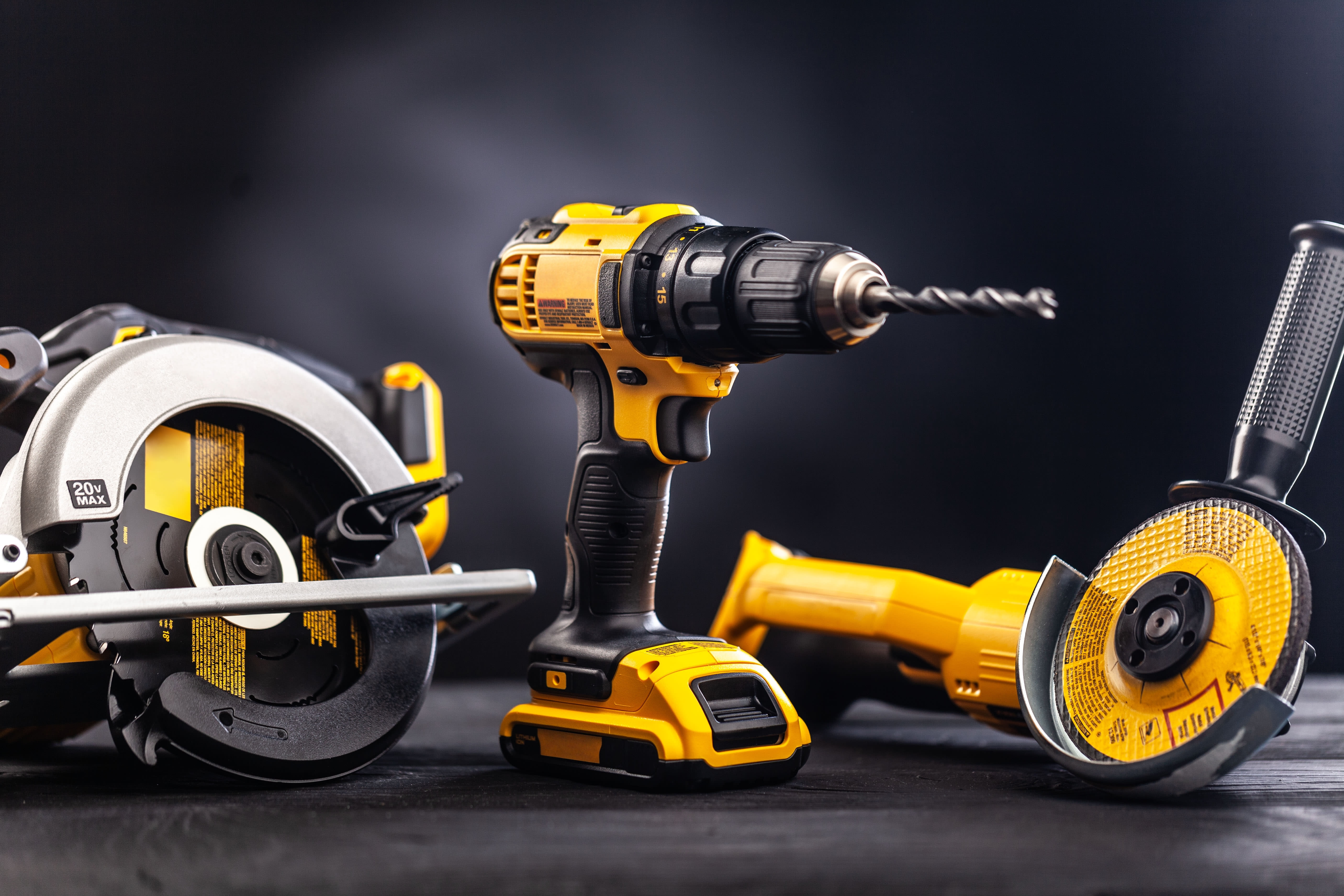- Published 9 Jan 2024
- Last Modified 6 Mar 2024
- 8 min
A Guide to Mechanical Tools: From Hand Tools to Pneumatics
Explore the essentials of hand tool selection, pneumatic options, cordless technology, ergonomics, and tool maintenance in our comprehensive guide.

Mechanical tools have been central to industrial advancement and innovation, evolving from basic hand tools to complex pneumatic devices. This guide offers an in-depth examination of the wide spectrum of mechanical tools, their development, applications, and impact on various industries. It highlights the shift from traditional methods to modern innovations, such as cordless technology and ergonomic designs, underscoring the importance of proper tool selection, maintenance, and safety practices. Aimed at both experienced professionals and newcomers, this guide provides comprehensive insights into the world of mechanical tools.

Hand Tools and Power Tools
Hand and power tools are essential for precision, efficiency, and safety in professional work. This section explores the range and complexity of these tools, emphasising how technological advancements have shaped their design and functionality.
Hand tools like hammers, screwdrivers, wrenches, and pliers, though simple, are indispensable for various tasks. Each tool serves a unique function, be it fastening, loosening, gripping, or cutting. The design of these tools, including their ergonomic handles and material composition, greatly affects their effectiveness and user comfort. Understanding these design aspects is crucial for professionals in their selection of the right ones to perform tasks with precision and ease.

Material and Craftsmanship
This segment explores the materials and manufacturing techniques that contribute to the durability of hand tools. Heat treatment techniques such as quenching and tempering are crucial for enhancing the toughness and wear resistance of steel tools, especially for maintaining sharp, durable edges on tools like drill bits and saw blades. The precision in manufacturing processes, like accurate casting or milling, ensures that these tools function reliably, particularly when mechanical adjustments are needed. This knowledge is vital for professionals to assess the quality and longevity of their hand tools, ensuring that their selections can withstand demanding work conditions.
Differentiating Between Corded and Cordless Tools
Hand tools are further segmented into corded and cordless variants. Here, we explore the selection between these options based on the type of work performed, budget constraints, or accessibility to power sources. While corded tools provide consistent and reliable performance, their mobility is restricted by the length of the cord and access to the power supply. On the other hand, cordless tools offer greater flexibility and convenience but may be limited by battery life and need for recharging.
Importance of Ergonomic Design and Safety
Ergonomic design and safety features have become crucial considerations in the development of hand tools. As professionals spend a significant amount of time using these tools, it is important to consider their ergonomic design to prevent fatigue, strain, and long-term injuries. Features like anti-vibration technology, soft grip handles, and adjustable angles enhance user comfort and reduce the risk of repetitive strain injuries. Furthermore, safety features like guard mechanisms and lock buttons prevent accidental tool activation and potential injuries.
\Next, we will switch to pneumatic tools. Known for their efficiency and power, pneumatic tools have become an integral part of various industries; the next section explains the working principles and applications of these tools and their advantages over traditional methods.
Pneumatic Tools and Their Efficiency
To appreciate the efficiency of pneumatic tools, it's essential to understand their working principles. Pneumatic tools are powered by compressed air, generated by an air compressor and stored in a tank. This compressed air is then directed to the tool through hoses, where it powers the mechanisms that perform various tasks. The continuous supply of high-pressure air allows for consistent performance and eliminates downtime.
Advantages of Pneumatic Tools
Pneumatic tools are widely used in industries that require high torque or speed. Due to their compressed air power source, these tools can deliver more power without overheating or requiring downtime for cooling. This means increased productivity and less maintenance compared to traditional electric-powered tools.
Moreover, pneumatic tools can be used in hazardous environments where electricity poses a safety risk. The absence of electrical components in pneumatic tools makes them less susceptible to sparking, making them suitable for use in explosive atmospheres. In addition, their design is often more compact and lightweight, offering greater versatility and ease of use in tight spaces. This makes them popular for tasks that require precision and accuracy, such as grinding or drilling.
Compressed Air System Considerations
While pneumatic tools offer numerous advantages, it's important to note that they require a compressed air system for operation. This includes an air compressor, air lines and hoses, and a storage tank. It is crucial to maintain these components to ensure clean and consistent airflow. Regular checks for leaks, proper lubrication of moving parts, and drainage of moisture from the system are essential for optimal performance and longevity of pneumatic tools.
Pneumatic Tools: Revolutionising the Australian Mining Industry
Building on the understanding of pneumatic tools and their efficiency, the Australian mining industry has embraced these tools for their robust performance in challenging tasks. Complementing them are the professional hand tools for mining, which remain crucial for a range of specific operations.
Pneumatic tools have revolutionised mining processes with their capability to handle heavy-duty activities, such as ore extraction and large-scale drilling. These tools are particularly valued for their safety in environments where electrical tools could be hazardous. In parallel, hand tools are essential for their versatility and adaptability, playing a key role in detailed and fine work that larger machinery cannot accomplish.
The combination of pneumatic and hand tools in mining operations optimises efficiency and safety, aligning with the industry's commitment to high standards and sustainable practices.
Tool Selection, Safety, and Maintenance
As with any tool, proper selection and maintenance are crucial for safety and performance. Professionals should consider the specific needs of their tasks before selecting the appropriate hand tool, considering factors such as power, precision, and durability. Furthermore, regular maintenance and inspections are necessary to ensure the tools are functioning properly and safely, reducing the risk of accidents or injuries. Here are some general tips:
Determining the Right Tool for the Job
- Consider the specific requirements of the task - Does it require precision or power? Will you be working in a tight space?
- Research and compare different brands and models to find the best fit for your needs.
- Test out tools before purchasing, if possible, to get a feel for their weight, grip, and control.
- Don't hesitate to invest in quality tools that will last longer and perform better.
Evaluating Brand Reliability and Safety Features
- Look for reputable brands with a history of producing high-quality, durable tools.
- Check for safety features such as lock buttons, guard mechanisms, and ergonomic design elements.
- Read reviews and customer feedback to gauge the overall reliability of a brand or specific tool.
- Familiarise yourself with the tool's safety instructions and use them properly to avoid accidents.
Comprehensive Maintenance and Cleaning Best Practices
- Regularly inspect tools for any damage or wear and tear.
- Keep tools clean and free of debris to prevent malfunctions.
- Follow the manufacturer's instructions for proper lubrication and maintenance of moving parts.
- Store tools in a dry, protected area when not in use to avoid rust or corrosion.
- Replace damaged or worn components promptly to maintain tool performance and safety.
Safety Measures, Protocols, and Protective Gear
- Always wear appropriate personal protective equipment (PPE).
- Follow safety protocols and procedures, such as proper tool handling and storage.
- Educate yourself on potential hazards and how to prevent them.
- Regularly review safety guidelines and implement any necessary updates.
- Immediately address any safety concerns or violations in the workplace.
Organising and Storage
In this section, we will discuss the importance of proper organisation and storage of tools. Keeping tools organised and in good condition not only improves efficiency but also extends their lifespan. Here are some tips:
- Group similar tools together – this makes it easier to find what you need.
- Use tool boxes or cabinets with compartments for smaller tools and components.
- Label or colour-code toolboxes for quick identification.
- Keep frequently used tools in a readily accessible area.
- Hang larger tools on peg boards or hooks to save space.
Partner with RS for a Quality Selection of Hand Tools
Choosing the right tool not only ensures efficiency and quality of work but also impacts overall productivity and safety. At RS, we offer a wide range of mechanical tools from top brands suitable for various applications. When it comes to mechanical tools, never compromise on quality. Partner with RS for the best selection of reliable, durable, and high-performing tools. Explore our range of hand tools, power tools, and pneumatic tools today and elevate your work to the next level. Remember, proper tool selection, maintenance, and safety measures are crucial for a successful and safe working environment. Trust RS to provide the tools and knowledge you need to complete the job.
Popular Hand Tool Brands
RS PRO
RS PRO offers an extensive selection of hand tools that combine precision engineering with durability. Known for their high-quality construction, these tools are designed for both professional and hobbyist use. From screwdrivers to pliers, RS PRO's hand tools are a reliable choice for those who require efficient and long-lasting tools for intricate tasks.
Makita
Makita stands out in the world of hand tools with its robust and reliable offerings that cater to a wide range of tasks. Known for their durability and precision, Makita's hand tools are favoured by professionals and DIY enthusiasts alike. Whether it's for construction, woodworking, or home repair, Makita provides a comprehensive selection of hand tools that guarantee performance and longevity, ensuring every job is done with utmost efficiency and ease.
Wiha Tools
Wiha Tools is celebrated for their innovative approach to hand tools. Their product selection, which includes precision screwdrivers and cutting tools, is characterised by ergonomic design and functional innovation. Wiha Tools are designed for those who seek comfort and efficiency in their hand tools, making them ideal for extended use in various applications.
Related links
- Safety in Mining: Choosing the Right Hand Tools for Hazardous Environments
- Tool Kits
- Top 13 Tools for the Best Electricians Tool Kit
- MECATRACTION Hand Operated Mechanical Crimping Tools Hand Crimp Tool for Wire Ferrules
- Klauke Crimp Tools
- Mining Industry Solutions: Hand Tools for Mining
- How to Choose the Best Screwdrivers and Screwdriver Sets: Best Recommendations
- Power Tool Batteries